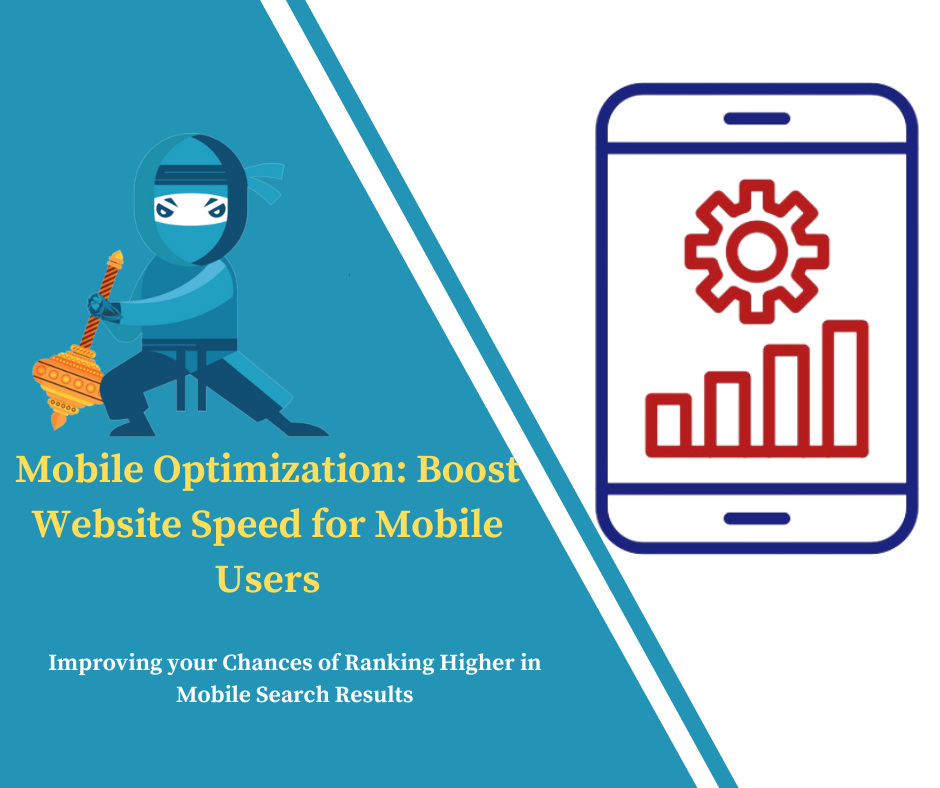Mobile Optimization: Boost Website Speed for Mobile Users
In today’s fast-paced digital world, mobile optimization is not just a luxury—it’s a necessity. Mobile users have high expectations when it comes to website performance, and slow load times can significantly impact user experience, engagement, and conversions. If your website isn’t optimized for mobile, you risk losing potential customers. This article will guide you through the essentials of mobile optimization and show how to boost website speed for mobile users, enhancing overall performance.
Why Mobile Optimization Matters
With over 50% of global web traffic coming from mobile devices, having a website that functions seamlessly on smartphones and tablets is crucial. Mobile users expect websites to load in less than three seconds, and any delay could lead to a high bounce rate. The speed of your site directly impacts your SEO rankings as well, especially with Google’s focus on mobile-first indexing.
Investing in mobile optimization ensures:
Better user experience.
Improved SEO performance.
Higher conversion rates.
Increased customer retention.
Key Strategies for Mobile Optimization
1. Optimize Images
Large image files are one of the main culprits behind slow loading times. By compressing images without compromising quality, you can significantly reduce the load on your server, speeding up your website.
Use image formats like WebP and JPEG 2000.
Compress images using tools like TinyPNG or ImageOptim.
Implement lazy loading, where images are only loaded as users scroll.
2. Minimize HTTP Requests
Every element on your website, from images to scripts, requires an HTTP request to load. Reducing these requests can make a big difference in speed.
Combine multiple CSS files into one.
Merge JavaScript files.
Use CSS sprites to combine multiple images into a single file.
3. Leverage Browser Caching
Browser caching allows previously visited websites to store data on a user’s device, reducing the number of requests to the server when they return to your site. This can improve load times significantly.
Set long expiration dates for files that rarely change.
Use tools like Google’s PageSpeed Insights to identify caching opportunities.
Also read: How Can Email Marketing Boost E-commerce Revenue?
4. Enable Compression
Gzip and Brotli compression are methods to reduce the size of your CSS, HTML, and JavaScript files. Smaller file sizes lead to faster load times and better performance.
Enable Gzip compression through your server settings.
Use Brotli compression for even more efficiency.
5. Use a Content Delivery Network (CDN)
A CDN stores copies of your website across various servers worldwide, reducing the distance between the server and the user, and boosting website speed.
Implement a CDN like Cloudflare or Akamai.
Ensure your CDN is configured to handle both static and dynamic content.
6. Prioritize Above-the-Fold Content
Above-the-fold content refers to the part of the website that is visible without scrolling. By optimizing the load speed of this content, you can significantly improve perceived performance for mobile users.
Load critical CSS first.
Defer non-critical JavaScript to load after the main content.
Use asynchronous loading for third-party scripts.
7. Reduce Redirects
Every time a page redirects to another page, your website faces an additional HTTP request-response cycle, slowing down the process.
Audit your website for unnecessary redirects.
Eliminate as many redirects as possible, especially on your mobile version.
8. Mobile-First Design
Design your website with mobile users in mind from the beginning. A mobile-first approach ensures that your website works seamlessly on smaller screens.
Use responsive design to adjust content dynamically to different screen sizes.
Test your website on various mobile devices to ensure optimal performance.
Best Tools for Mobile Optimization
Several tools can help you monitor and improve your website’s mobile optimization efforts. Some of the most popular include:
Google PageSpeed Insights: Provides insights into your website’s performance and suggests improvements.
GTmetrix: Analyzes page speed and offers actionable recommendations for optimizing mobile speed.
Pingdom Tools: Tests your website’s speed and performance across various regions.
Mobile-Friendly Test: A Google tool that assesses whether your website is mobile-friendly.
Lighthouse: Google’s open-source tool for improving the quality of web pages, offering insights into performance, accessibility, and SEO.
The Impact of Mobile Optimization on SEO
Google has shifted towards a mobile-first indexing approach, which means that Google primarily uses the mobile version of a site for ranking and indexing. If your site is not mobile-optimized, it will likely rank lower in search results, regardless of how well it performs on desktops. Key SEO benefits of mobile optimization include:
Improved Rankings: Mobile-friendly sites get a boost in SERP rankings, especially for mobile searches.
Lower Bounce Rates: A well-optimized mobile site encourages users to stay longer, reducing the bounce rate.
Increased Engagement: Mobile-optimized websites offer a better user experience, leading to more engagement and higher conversion rates.
How Mobile Optimization Boosts Conversions
Mobile users have shorter attention spans, and any delay in loading your site can lead to lost sales. Here’s how mobile optimization can help increase conversions:
Faster Load Times: A faster site encourages users to browse longer, reducing cart abandonment rates.
Enhanced User Experience: A smooth, mobile-friendly site ensures users can navigate easily, leading to more purchases.
Better Functionality: When your site works well on mobile, users are more likely to trust your brand and complete transactions.
FAQs
What is mobile optimization?
Mobile optimization refers to the process of ensuring that a website is designed and performs well on mobile devices. This includes improving site speed, user experience, and functionality specifically for smartphones and tablets.
Why is mobile optimization important for SEO?
Google uses mobile-first indexing, meaning the mobile version of your site is the primary version considered for ranking. If your site isn’t mobile-optimized, it will likely rank lower in search results, impacting your visibility and traffic.
How does mobile optimization affect user experience?
A mobile-optimized site loads faster, is easier to navigate and provides a better overall experience for mobile users. This can result in higher user engagement, longer session durations, and increased conversions.
What are some common tools for mobile optimization?
Popular tools for mobile optimization include Google PageSpeed Insights, GTmetrix, Pingdom Tools, Mobile-Friendly Test, and Lighthouse. These tools help you analyze and improve your site’s performance on mobile devices.
How can I improve my website’s mobile speed?
You can improve mobile speed by optimizing images, enabling compression, leveraging browser caching, minimizing HTTP requests, using a CDN, and reducing redirects.
Conclusion
Mobile optimization is no longer optional in today’s competitive online marketplace. By implementing the strategies outlined in this article—optimizing images, minimizing HTTP requests, leveraging browser caching, and more—you can significantly improve your website’s speed for mobile users. This not only enhances user experience but also boosts SEO rankings and conversion rates, ultimately contributing to the success of your online presence.








